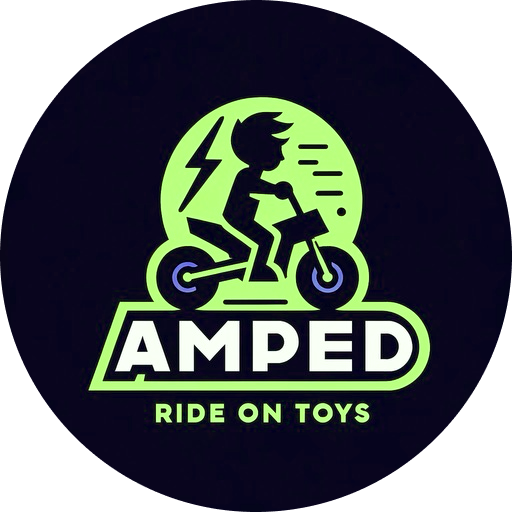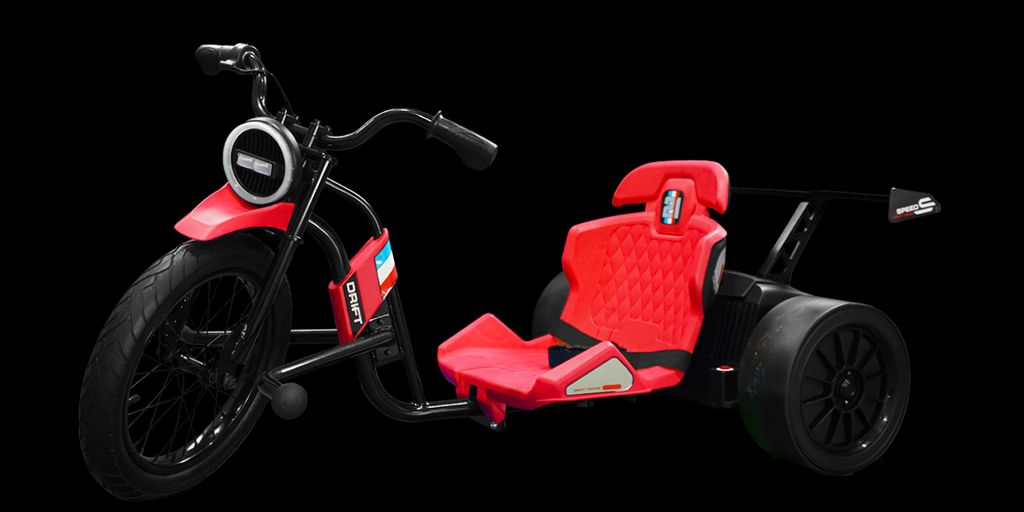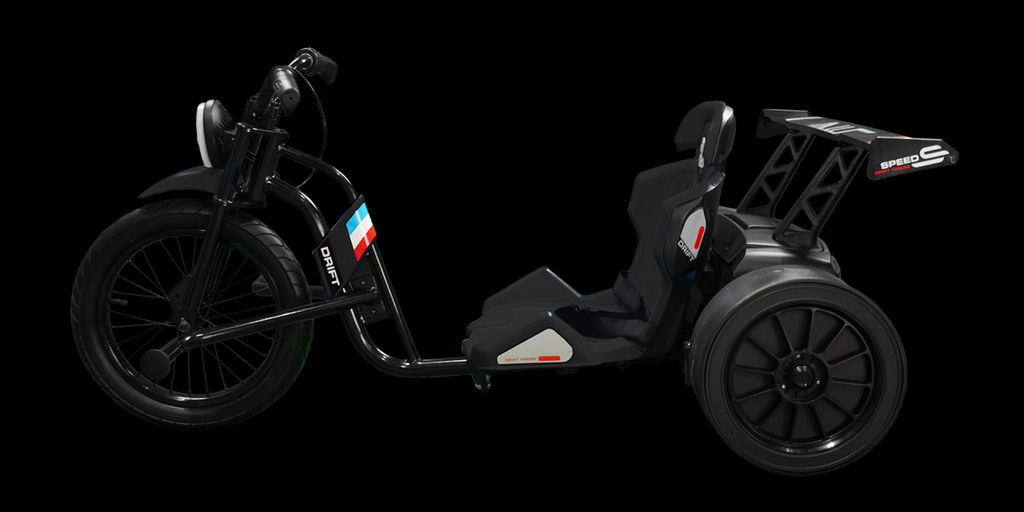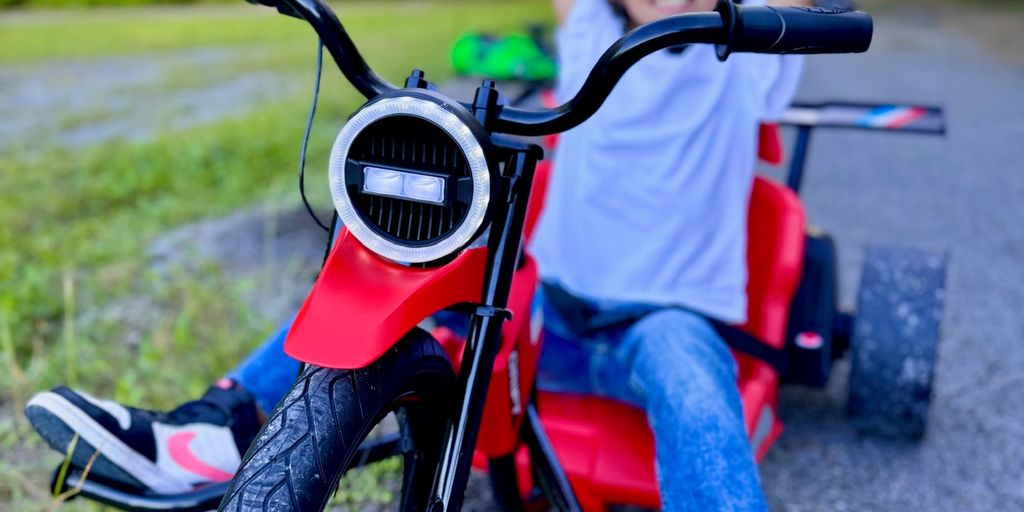Ever wondered what makes a drift trike different from your average ride-on toy? It's not just about wheels and a seat; these two things offer totally different kinds of fun. One is all about sliding sideways and getting that adrenaline rush, while the other is more about a chill cruise. So, if you're trying to figure out which one is right for you or your kid, you've come to the right place. Let's break down the drift trike versus the regular ride-on and see which one really brings the most smiles.
Key Takeaways
- Drift trikes are for thrill-seekers who love to slide and control chaos, while regular ride-ons offer stable, relaxed fun.
- Safety gear is super important for drift trikes, but regular ride-ons also have their own safety features to consider.
- You'll need specific places to really enjoy a drift trike, like sloped areas, whereas ride-ons work pretty much anywhere flat.
- Keeping a drift trike in good shape might take a bit more work than a standard ride-on.
- The cost for a drift trike can be more of an investment compared to many regular ride-on toys.
What Exactly Is a Drift Trike?
Okay, so you've probably seen these things zipping around and thought, "What is that?" Well, let's break it down. A drift trike isn't your average ride-on toy. It's a whole different beast designed for one thing: sideways action. They're super fun, and surprisingly simple in design. Let's get into the details.
The Thrill of the Slide
Drift trikes are all about the slide. Unlike regular bikes or go-karts where you're trying to grip the road, drift trikes are built to break traction. This controlled loss of grip is what makes them so exciting. The feeling of sliding around corners, kicking up a bit of dust, is a total rush. It's like being a stunt driver, but on a smaller, more manageable scale. It's a unique experience that's hard to describe until you try it yourself.
Built for Adrenaline
These trikes aren't just slapped together. They're designed with a specific purpose in mind. The low center of gravity helps prevent rollovers, and the hard, slick rear wheels are key to initiating and maintaining drifts. The frames are usually pretty sturdy to handle the stresses of sliding and the occasional bump. Plus, many drift trikes come with features like adjustable seats and handlebars, so you can dial in the perfect fit. It's all about maximizing control and comfort while you're pushing the limits. You can find different drift trike models to suit your needs.
A Unique Riding Experience
Let's be real, riding a drift trike is nothing like riding a bike or even a go-kart. It's a completely different experience. It's more about finesse and control than raw power. You're constantly adjusting your weight, steering, and throttle (if it's a motorized one) to maintain the perfect drift. It's challenging, rewarding, and incredibly addictive. Once you get the hang of it, you'll be hooked. It's a great way to get outside and have some fun, and it's a skill that takes time to master. Here are some things that make it unique:
- The feeling of sliding sideways is unlike anything else.
- It requires a different set of skills than traditional riding.
- It's a great way to challenge yourself and improve your coordination.
Drift trikes offer a unique blend of excitement and skill, making them a thrilling alternative to traditional ride-on toys. They're not just about going fast; they're about mastering the art of controlled chaos.
Regular Ride-Ons: The Classic Choice
Regular ride-ons? Oh, you know, the classics! These are the toys that many of us grew up with, the ones that sparked our earliest adventures. They might not have the extreme thrills of a drift trike, but they offer a different kind of joy – a simpler, more grounded kind of fun. Think back to your first tricycle or scooter; those were the days!
Simple Joys of Cruising
There's something undeniably satisfying about a regular ride-on. It's the feeling of freedom as you pedal down the sidewalk, the wind in your hair (or helmet!), and the simple act of moving under your own power. It's about enjoying the journey, not just the destination. It's a great way to get some exercise without even realizing you're working out. Plus, it's a fantastic way for kids to explore their neighborhood and build confidence.
Stability and Control
One of the biggest advantages of regular ride-ons is their stability. Unlike drift trikes, which are designed to slide and spin, these toys are built for balance and control. This makes them ideal for younger children or anyone who's still developing their coordination. You can find a ride-on excavator that teaches kids about mechanics while they play.
Versatility for All Ages
Regular ride-ons come in all shapes and sizes, catering to a wide range of ages and abilities. From toddler-sized push cars to adult scooters, there's a ride-on for everyone. This versatility makes them a great option for families with children of different ages, as everyone can join in on the fun. Plus, many ride-ons can be adjusted as kids grow, extending their lifespan and providing years of enjoyment.
Regular ride-ons are more than just toys; they're tools for development. They help children build gross motor skills, spatial awareness, and problem-solving abilities. They also encourage outdoor play and social interaction, which are essential for a child's overall well-being.
The Need for Speed: Drift Trike vs. Ride-On
Unleashing Inner Racers
Okay, let's be real. We all have a little speed demon inside, right? Some of us just want to cruise, while others crave that adrenaline rush. Drift trikes and regular ride-ons cater to totally different ends of that spectrum. It's like comparing a go-kart to a leisurely bike ride. Both are fun, but for very different reasons.
Controlled Chaos of Drifting
Drift trikes? They're all about controlled chaos. The whole point is to lose traction and slide around corners. It's not about raw speed, but about the skill of managing a slide. You're not just going fast; you're actively fighting to control the trike as it tries to break free. It's a unique feeling, and when you nail a perfect drift, it's incredibly satisfying. It's like dancing with a machine that's trying to throw you off!
Gentle Paces of Traditional Rides
Regular ride-ons, on the other hand, are more about enjoying the journey. They're not built for speed or drifting. They're about a relaxed pace, feeling the wind in your hair (if you have any!), and taking in your surroundings. It's a calmer, more predictable experience. Think of it as a Sunday drive versus a race car rally. Here are some things you can do with a regular ride-on:
- Explore the neighborhood.
- Enjoy a leisurely ride in the park.
- Teach younger kids the basics of balance and coordination.
For some, the thrill of speed is about pushing limits and experiencing the rush of adrenaline. For others, it's about the simple pleasure of moving quickly and efficiently from one place to another. Both are valid, and both can be incredibly enjoyable.
Ultimately, the "need for speed" is a personal thing. Do you want the controlled chaos of a drift trike, or the gentle paces of a traditional ride-on? Your answer will determine which one sparks more fun for you.
Safety First: A Look at Both Rides
Okay, let's talk safety. No matter how much fun we're having, it's super important to be smart about how we ride. Both drift trikes and regular ride-ons have their own set of safety considerations, so let's break it down.
Protective Gear for Drift Trikes
Drift trikes are all about sliding and speed, which means you're closer to the ground and more likely to take a spill. That's why protective gear is non-negotiable. Think of it like this: you wouldn't skip sunscreen at the beach, right? Same idea. Here's what I always recommend:
- Helmet: A good quality helmet is the most important thing. Make sure it fits snugly and is certified for impact protection. No excuses!
- Gloves: Protect your hands from scrapes and blisters. Trust me, you'll be gripping those handlebars tight.
- Elbow and Knee Pads: These are lifesavers. They'll cushion you during those inevitable slides and tumbles. I've seen too many scraped elbows to skip these.
- Sturdy Shoes: Closed-toe shoes with good grip are a must. No sandals or flip-flops allowed.
I always tell people to dress for the slide, not the ride. It might sound silly, but it's true. A little extra padding can make a huge difference in preventing injuries. Plus, it gives you the confidence to push your limits a bit (safely, of course!).
Ride-On Safety Features
Regular ride-ons might seem less risky, but safety is still key. They're often used by younger kids, so it's up to us to make sure they're protected. Here are some things to keep in mind:
- Supervision: Always supervise young children while they're riding. It's easy for them to get distracted or wander into unsafe areas.
- Age Appropriateness: Make sure the ride-on is the right size and weight capacity for the child. Overloading it can lead to accidents.
- Seatbelts/Harnesses: If the ride-on has a seatbelt or harness, use it! It's there for a reason.
- Smooth Surfaces: Stick to smooth, paved surfaces to avoid tipping or losing control. Grass and gravel can be tricky.
Understanding the Risks
Okay, let's be real. Both drift trikes and regular ride-ons come with risks. It's all about understanding those risks and taking steps to minimize them. For drift trikes, the main risks are related to speed and sliding. You could lose control, collide with something, or get scraped up. For regular ride-ons, the risks are more about tipping over, falling off, or collisions with other objects or people. Always check the security service before riding.
Here's a quick comparison:
| Risk | Drift Trike | Regular Ride-On |
|---|---|---|
| Loss of Control | High | Medium |
| Collisions | Medium | Low |
| Tipping Over | Low (but can happen) | Medium |
| Scrapes/Bruises | High | Low |
| Serious Injuries | Medium (if safety gear isn't used) | Low (but possible, especially without supervision) |
By being aware of these risks and taking the necessary precautions, we can all have a blast while staying safe. Remember, fun is important, but safety always comes first!
Where to Ride: Ideal Environments
Drift Trike Terrain
Drift trikes are all about finding the right surface. Smooth, paved areas with a slight decline are ideal – think empty parking lots, go-kart tracks, or even quiet residential streets (always check local regulations first, of course!). You want enough space to really get those drifts going without worrying about obstacles. Avoid surfaces that are too rough, as they can damage the tires and make drifting difficult. Also, keep an eye out for hazards like potholes or gravel. I've found that the best spots are often industrial parks on weekends when they're deserted. Just be respectful and leave no trace!
Ride-On Play Areas
Regular ride-ons are much more versatile when it comes to location. Parks, sidewalks, driveways, and even indoor spaces work well. The key is to find a safe, relatively flat area free from traffic. For younger kids, playgrounds or enclosed yards are perfect. Older kids might enjoy exploring bike paths or quiet neighborhood streets. The beauty of ride-ons is their adaptability – you can pretty much use them anywhere that's reasonably smooth and safe. My nephew loves riding his around the house, much to my sister's dismay!
Finding Your Perfect Spot
Ultimately, the best place to ride depends on your skill level, the type of ride you have, and your local environment. Here's a quick guide:
- Drift Trikes: Smooth pavement, slight inclines, open spaces.
- Ride-Ons (Younger Kids): Playgrounds, yards, indoor spaces.
- Ride-Ons (Older Kids): Bike paths, sidewalks, quiet streets.
Always prioritize safety. Wear appropriate protective gear, be aware of your surroundings, and follow local regulations. It's also a good idea to scout out new locations before riding to identify any potential hazards.
Don't be afraid to explore and experiment to find your favorite riding spots. The most important thing is to have fun and stay safe!
Maintenance and Durability
Let's be real, nobody wants a fun machine that breaks down all the time. So, how do drift trikes and regular ride-ons stack up when it comes to keeping them running smoothly and how long they last?
Keeping Your Drift Trike in Top Shape
Drift trikes, with their specialized components, need a bit more attention. The rear wheels, being PVC, are designed to wear down, so expect to replace them regularly. How often depends on how hard you're drifting, but it's a key part of drift trike ownership. Beyond that, check the frame for cracks, especially after hard use. Keep an eye on the bearings in the wheels and steering column – smooth bearings mean smooth drifts. Also, make sure to inspect the trike frame regularly.
- Regularly inspect PVC sleeves for wear and tear.
- Check and tighten bolts to prevent loosening from vibrations.
- Lubricate moving parts like the steering column.
Longevity of Regular Ride-Ons
Regular ride-ons, especially the simpler ones, are generally built to last. Plastic bodies can take a beating, and the wheels are usually solid rubber or plastic, meaning they're pretty durable. The main thing to watch out for is battery life in electric models. Overcharging or letting the battery completely die can shorten its lifespan. Store them properly during off-seasons to prevent damage from weather.
- Store indoors to protect from weather.
- Check and maintain battery charge (for electric models).
- Inspect wheels and axles for damage.
Simple Care Tips
No matter which ride you choose, a little bit of care goes a long way. Clean them regularly to prevent dirt buildup, which can cause wear and tear. Store them in a dry place to prevent rust. And always follow the manufacturer's instructions for maintenance and repairs. A little effort will keep your fun machine rolling for years to come.
Here's a quick comparison table:
| Feature | Drift Trike | Regular Ride-On |
|---|---|---|
| Wheel Wear | High (rear PVC sleeves) | Low |
| Frame Inspection | Important (due to stress from drifting) | Less critical |
| Battery Care | Not applicable (usually non-electric) | Important (for electric models) |
| Overall | More maintenance required | Less maintenance required |
Cost Comparison: What's Your Budget?
Investing in a Drift Trike
Okay, let's talk money. Drift trikes? They can be a bit of an investment. You're not just buying something to roll down the sidewalk; you're getting a machine built for thrills. Expect to shell out more than you would for a basic ride-on. Prices vary depending on the features, build quality, and brand. High-end models with powerful motors and durable frames can really put a dent in your wallet. But hey, think of it as an investment in fun!
Affordable Ride-On Options
On the flip side, regular ride-ons are generally much easier on the bank account. You can find a ton of options at different price points, from simple push-powered cars to battery-operated vehicles. These are great if you're looking for something that won't break the bank but will still provide hours of entertainment. Plus, there are always sales and discounts to be found, making them even more accessible.
Value for Your Fun
So, which one gives you more bang for your buck? It really depends on what you're looking for. A drift trike offers a unique, adrenaline-pumping experience, but it comes at a higher cost. A regular ride-on is more affordable and versatile, perfect for younger kids or those who prefer a more relaxed ride. Consider what you value most – the thrill of drifting or the simple joy of cruising – and let that guide your decision. And don't forget to factor in maintenance costs! Drift trikes might require more upkeep due to their more complex components. Ultimately, the best choice is the one that fits your budget and brings you the most joy.
When you're weighing the costs, think about the long-term fun factor. A cheaper ride-on might lose its appeal quickly, while a drift trike could provide years of excitement. It's all about finding that sweet spot between price and enjoyment.
Here's a quick comparison table:
| Feature | Drift Trike | Regular Ride-On |
|---|---|---|
| Initial Cost | Higher | Lower |
| Maintenance | Higher | Lower |
| Fun Factor | High (Adrenaline) | Medium (Relaxed) |
| Durability | Varies, can be high | Varies, can be lower |
And remember, Follow Amped Ride on Toys on Instagram for the latest deals and reviews!
Figuring out what things cost can be tricky, right? It's like trying to pick the best snack when you only have a few bucks. We get it! That's why we put together a super simple guide to help you see all your options and what they mean for your wallet. Ready to make smart choices without breaking the bank? Check out our full guide on how to find the perfect fit for your budget.
Wrapping It Up: Which Ride Wins?
So, when it comes to picking between a drift trike and a regular ride-on, it really just comes down to what kind of fun you're looking for. If you're into something a bit wilder, with slides and spins, then a drift trike might be your thing. But if you prefer a chill ride, maybe just cruising around the neighborhood, then a regular ride-on is probably a better fit. Both are great, just in different ways. It's all about what makes you smile the most!
Frequently Asked Questions
What exactly is a drift trike?
A drift trike is a cool three-wheeled ride. It has two wheels in the back that are usually slick, so they can slide easily. The front wheel is bigger, and you steer with handlebars. It's built for sliding around corners and having a blast!
How is a regular ride-on different from a drift trike?
Regular ride-ons are like classic bikes or scooters. They're made for smooth, easy riding. Think of a tricycle or a kid's scooter. They're stable and good for just cruising around.
Which one is faster, a drift trike or a regular ride-on?
Drift trikes are all about speed and sliding. You go fast and then use the slick back wheels to drift. Regular ride-ons are more about gentle rides and just getting from one place to another without too much excitement.
What safety gear do I need for each type of ride?
For drift trikes, you really need a helmet, knee pads, and elbow pads because you'll be sliding and going fast. Regular ride-ons are safer, but a helmet is always a good idea, especially for kids.
Where can I ride a drift trike versus a regular ride-on?
Drift trikes are best on smooth, paved hills or big open areas where you can slide without hitting anything. Regular ride-ons are great for sidewalks, parks, or flat driveways.
Is a drift trike more expensive than a regular ride-on?
Drift trikes can cost more because they have special parts for drifting. Regular ride-ons are usually cheaper and easier to find. You can find simple ride-ons for a small price.




Leave a comment
This site is protected by hCaptcha and the hCaptcha Privacy Policy and Terms of Service apply.